Since the Toyota Prius gasoline/electric hybrid vehicle has the appearance of a sports car, a dashboard display similar to aviation equipment, and a noise-free smooth start, it is not surprising that the car is the fastest-selling vehicle of its kind. (Fig. 1) However, in addition to this, the car has an identifiable important feature: fuel economy. The US Environmental Protection Agency (EPS) gives fuel levels: 61 miles per gallon (mpg) on ​​the street and 50 mpg on the highway (ideal test conditions). In fact, the number of fuels on the street/highway combination pavement that the driver can expect is 45 to 50 mpg. The characteristic of a hybrid vehicle is that it is started by a gasoline engine and then converted into battery power to accelerate. However, the Prius took a different approach, powered by battery power, and then switched to a gasoline engine at speeds in excess of 20 mph. Although the Prius has a big breakthrough, the driver does not have to step on the throttle from full braking in order to maximize fuel economy. Due to the highest oil prices that the United States and the rest of the world have faced, the Prius's fuel consumption is a welcome sign in markets where gasoline consumption is not strong.
This article refers to the address: http://
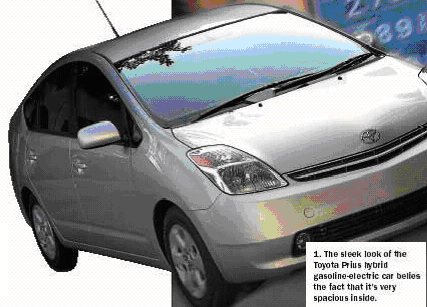
Hybrid System Technology The Prius design is based on what Toyota calls the hybrid co-drive concept. The goal of this concept is to work with electric motor power and gasoline engine power to maximize vehicle power and environmental performance. The most recent model of the Prius is based on the Toyota Hybrid Total System II (THS-II) technology. Each successive generation of THS-II systems improves gasoline fuel efficiency and reduces heat dissipation, including a coaxial 4-cylinder 1.5-liter engine, a high-voltage nickel-metal hydride battery (NiMH), and a smart hybrid drive with planetary gear system. The bridge and a complex engine control unit (Figure 2).
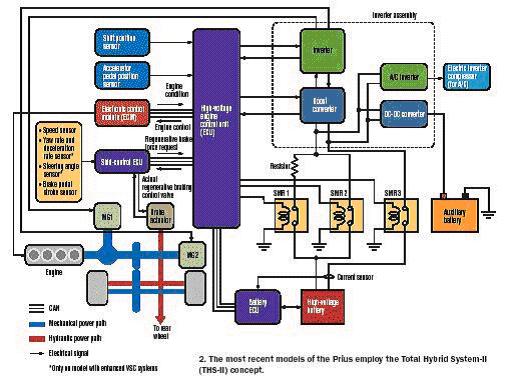
Mixture of the two methods Basically, both forms of automotive power systems exist: series and parallel. Each has its own set of front and back features. Unlike other hybrid gasoline-electric vehicles, the Prius combines the two and maximizes each strength and complements their weaknesses. In a series hybrid system, the gasoline engine activates the generator and the resulting current causes the electric motor to drive the wheels (Figure 3). In automotive operation, the low-output engine used here keeps the car at a steady speed in the most economical range and effectively recharges the battery.
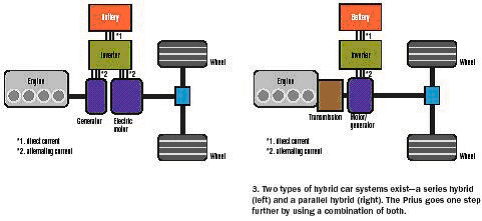
In a parallel hybrid system, both the gasoline engine and the electric motor directly drive the wheels. In addition to supplementing the engine's prime mover, the electric motor can also act as a generator to recharge the battery during vehicle operation. The Prius uses two permanent magnet 500-V AC motor generators: MG1 and MG2. Both motors are driven by a transformer bank that converts the DC voltage of the battery to an AC high voltage. A hybrid drive axle and planetary gear system connects two engines and two generators. (Figure 4)
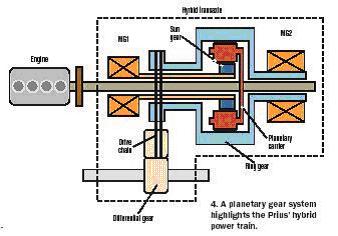
Since the MG1 and MG2 produce 67hp output from 1040rpm to 5600rpm, the MG1 and MG2 have enough torque to start the car without the help of a gasoline engine. The Prius engine runs at a maximum speed of only 5000 rpm and delivers 75 hp output. First, the high voltage battery supplies power to the MG2 to drive the wheels. When the engine wheel is driven by the engine through the planetary gears, the MG1 is rotated by the engine to supply a current to the MG2. Next, the engine rotates the MG1 through the planetary gears to charge the high voltage battery. When the car decelerates, the kinetic energy of the wheel is restored to electrical energy for charging by the MG2 for the high voltage battery (Figure 5). This is the famous "regenerative braking".
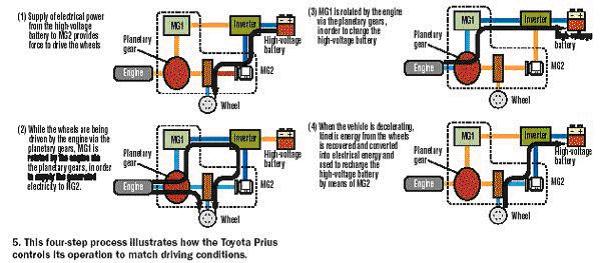
Glass Fiber Covered Flat Copper Wire
| About Glass Fiber Covered Flat Copper Wire |
Fiber Glass Covered Aluminum/Copper Wire is according to customers` requirement, aluminum/Copper conductor is evenly covered with one or two layers of non-alkali fiberglass, then it`s impregnated in compatible insulating coating of required thermal class baked to make a whole between fiberglass and aluminum/Copper conductor
Excellent resistance to abrasion and solvent, excellent electricity
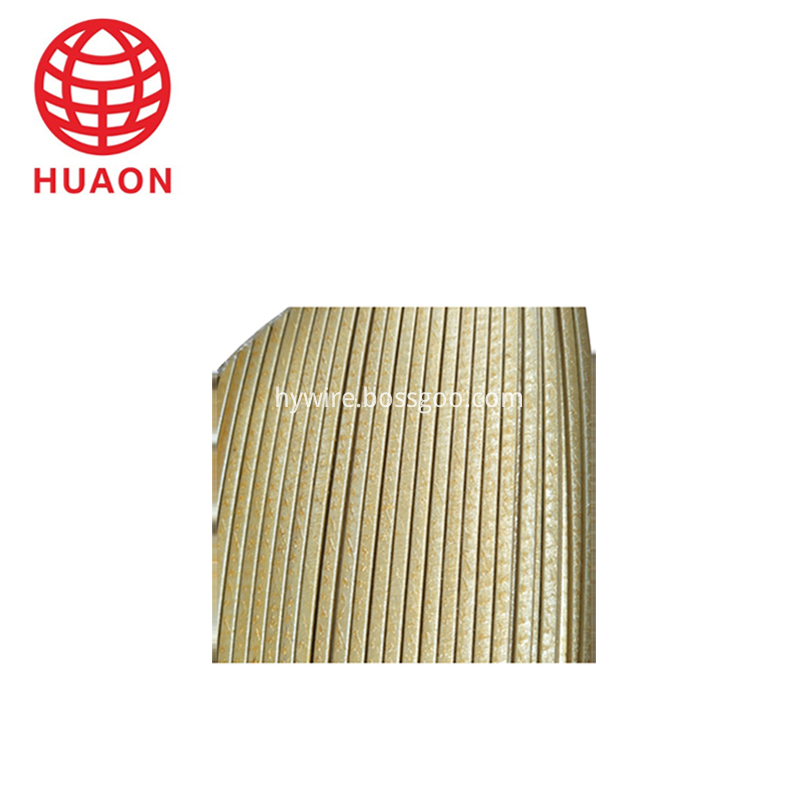
a) Excellent resistance to abrasion and solvent,
b) Excellent electricity performance
c) Excellent heat shock, adherence and flexibility,
d) High cut through
e) Resistance to high voltage in oil;
f) Rise up the filling coefficient of the transformer;
g) Reduce volume and the cost of the transformer
Glass Covered Winding Wire,Glass Fiber Covered Flat Copper Wire,Fiber Glass Covered Copper Wire,Generator Flat Glass Fiber Covered
HENAN HUAYANG ELECTRICAL TECHNOLOGY GROUP CO.,LTD , https://www.huaonwire.com